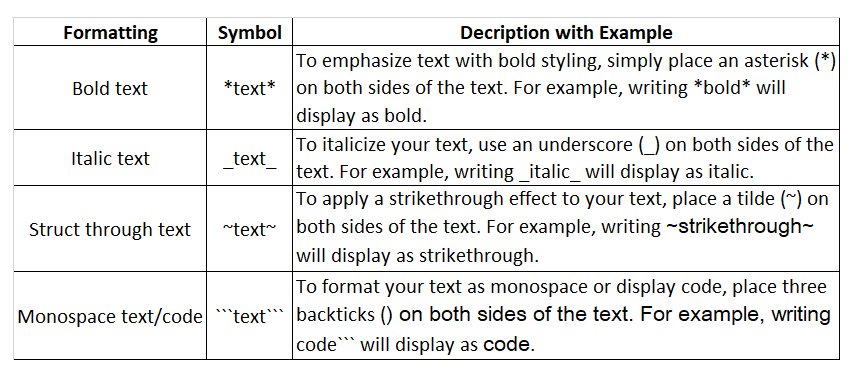What Are Template Formatting Rules for WhatsApp Message Templates?
When using WhatsApp Business, creating and managing message templates is crucial for sending automated messages. However, these templates must follow specific formatting guidelines to ensure that they are approved and used without issues. Here’s a breakdown of the key formatting rules:
1. Text-Based Content Only
The content of your WhatsApp template must be text-based and can only include:
Letters
Digits
Special characters
Emojis
WhatsApp-specific formatting (see formatting table below)
Additionally, the template must not exceed 1024 characters.
2. Template Name
Your WhatsApp message template name must follow specific rules:
It can only include lowercase alphanumeric characters (letters and digits) and underscores.
Example:
valid template names: deliver_update, purchase_followup
invalid template names: Message_123, Template@home
3. Descriptive Template Names for Faster Approval
WhatsApp recommends that businesses use descriptive template names instead of random strings like “message_124a”. Descriptive names help the approvers easily understand the purpose of the template, speeding up the approval process. They also help you manage your templates better as you grow your collection.
4. Template Content
The content of your template is subject to strict formatting rules:
Must be text-based and include only letters, digits, special characters, emojis, and WhatsApp-specific formatting.
The message template name field is limited to 512 characters.
The message template content field is limited to 1024 characters.
Important Content Rules:
No newlines, tabs, or more than four consecutive spaces.
Use double curly brackets for dynamic fields, e.g., {{name}}, to personalize the messages.
5. Template Creation Limitations
WhatsApp allows businesses to create only 100 message templates per hour. Be mindful of this limitation as you plan the creation of your templates.

6. Template Translations
While WhatsApp supports sending templates in various languages, translation services are not provided. If you want to send messages in another language, you will need to submit your own translations. Remember, these translations must also follow the same rules as the original template.
